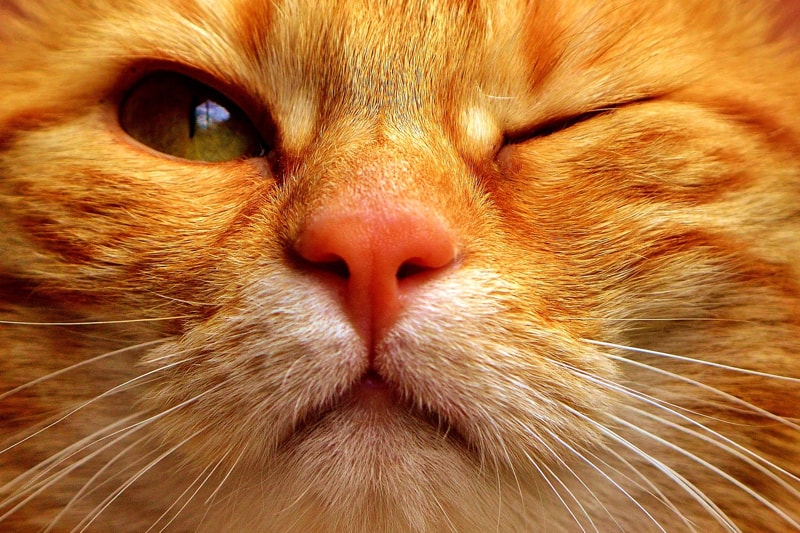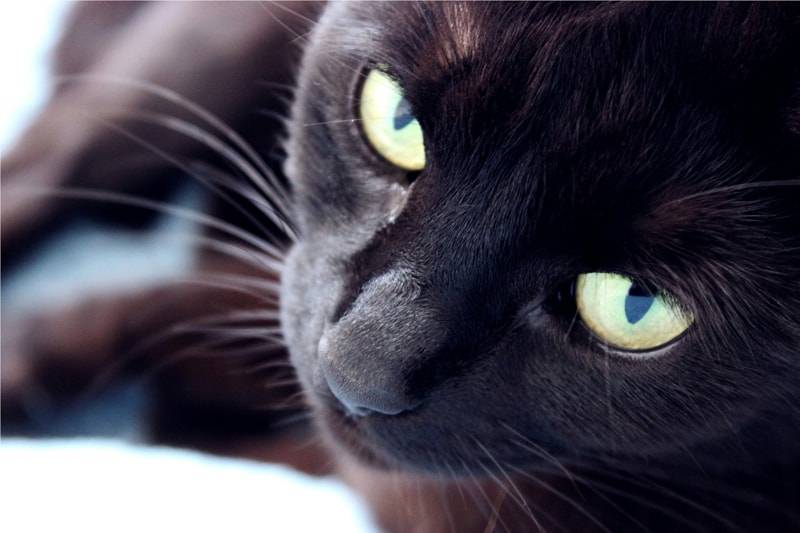Pet Gift Guide
Whether you are shopping for a cat, dog, or fellow pet parent, read about some gift inspiration to celebrate the pets and pet parents in your life.
Do your cat’s eyes appear red or irritated? Are they blinking or squinting a lot?
One of these eye problems could be to blame:
They are some of the most common eye claims submitted for cats by ASPCA Pet Health Insurance customers.*

Before we get into eye disorders, let’s take a quick look at the structure of a cat’s eye, which is similar to our own eyes. The major parts include:
Cats also have a third eyelid at the inside corner of their eyes. It helps keep the eye moist and protect it from damage.
Cats can get pink eye, just like people do. Pink eye happens when the moist tissue that lines the eyeball (called the conjunctiva) becomes inflamed. The symptoms include that familiar pink or reddish color, sticky eye discharge, and swelling. It can have a few different causes:
Pink eye can be painful for your cat and worsen if you wait to treat it, so visit your veterinarian at the first signs of it.

There are lots of ways your cat can damage the cornea of their eyes. Your cat could accidentally scratch their eye while trying to satisfy an itch. A bit of dirt, debris, or small bug could get in them. Or their eyes could get scratched during a tussle with another cat or animal.
You may be able to see signs of a corneal injury, such as redness, tearing, or blood in the eye. You might also notice that your cat is squinting, blinking, or pawing at their face. If you suspect your cat has damaged their cornea, you should take them to the veterinarian.
When the uvea, which is the colored part of the eye containing blood vessels, becomes inflamed, it is referred to as uveitis. This condition can be painful, and it can impact your cat’s vision if left untreated. Signs can include changes in eye pupil size, cloudiness, redness, excessive tearing, and discharge.
Uveitis can happen due to trauma to the eye, bacterial infection, auto-immune diseases, infectious diseases like Feline Leukemia Virus ( FeLV) or Feline Immunodeficiency Virus (FIV), parasitic diseases such as Toxoplasmosis, or cancer. Treatment will depend on the underlying cause. For instance, antibiotics will be needed to treat a bacterial infection. If the eye is cancerous, it may need to be surgically removed.

This painful condition occurs when the fluid in the eyeball doesn’t drain correctly. It causes pressure in the eyeball and can lead to blindness. Symptoms include tearing, redness, cloudiness, and dilated pupils. The eye may also bulge due to the increased pressure.
Glaucoma can be treated with medications to reduce fluid production and promote drainage. In severe cases, surgery may be recommended.
When the edges of the eyelid fold inward, the eyelashes of the eye rub against the cornea, which is a condition known as entropion. If this occurs, it can result in corneal damage and scarring. See your veterinarian if you detect signs of entropion, such as excessive tearing, squinting, redness, or sagging skin around the eyes.
Inflammation of the cornea, which is referred to as keratitis, can be caused by a number of things, such as trauma to the eye, a bacterial infection, or eye conditions. Keratitis can be caused by exposure to feline herpes virus or trauma to the eye, such as a scratch or other injury.
Signs of keratitis include redness, swelling, discharge, excessive tearing, squinting, avoiding bright light, and discoloration of the eyes. Treatment will depend on the underlying cause and may include topical antibiotic or antiviral medications.

If you see a mass forming on your cat’s eyelid or notice signs such as swelling, excessive tearing, redness, or discharge, you should contact your veterinarian. Eyelid tumors in cats are often cancerous, and the prognosis can be better if it is caught in the early stages. Your veterinarian can recommend appropriate treatment, which may include surgically removing the mass, especially if it is cancerous.
Cataracts happen when the normally transparent lens of the eye becomes white and cloudy. This condition is more prevalent in certain breeds, such as Persians and Himalayans. Older cats and cats with diabetes are also susceptible to cataracts.
This condition can impact your cat’s vision and eventually lead to blindness. Take your cat to the veterinarian if you notice cloudiness in their eyes.

There are things you can do to help keep your cat’s eyes bright, shiny, and healthy. For instance:
* Internal claims data, 2017
The information presented in this article is for educational and informational purposes only and does not constitute or substitute for the advice of your veterinarian.